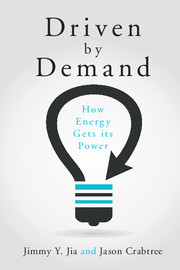Book contents
3 - Energy: the delivery system
from Part II - Three frameworks
Published online by Cambridge University Press: 05 June 2015
Summary
You and I come by road or rail, but economists travel on infrastructure.
Margaret ThatcherEvery year, Lawrence Livermore National Laboratory (LLNL) publishes a flow diagram of energy consumption for the entire United States. A 2013 flow diagram is reprinted as Figure 3.1 (LLN, 2013). The arrows denote the direction of energy flows, while line width denotes the magnitude of the flow. This is perhaps the most singularly important graph to understand national energy demand, delivery, and supply. It is essentially a version of the energy balance diagram of Figure 3.1 for the US during the calendar year 2013.
Energy is balanced throughout the entire system. On the left-hand side, “energy in” is denoted by a plethora of different fuels, ranging from solar to petroleum. These fuels are also called sources. On the far right-hand side, “waste energy” is quantified as Rejected Energy, and useful energy is denoted by Energy Services. These correspond to “aste energy out” and “useful energy out” in our simple, original diagram (Figure 2.1). Rejected Energy includes generation losses, transmission losses, unused energy, and wasted energy. Energy Services are the benefits of useful work, such as running appliances and lighting or powering vehicles. The US consumed 37 quads in energy services and generated 58.1 quads in rejected energy in 2013. All told, 61% of the energy sourced during that year was waste energy.
The boxes in the center of the figure represent the different energy transformations performed throughout the energy delivery system. The four boxes denoted by Residential, Commercial, Industrial and Transportation are known as sinks or end uses. All fuels can be converted into electricity. For some fuels, such as nuclear and wind, electricity is the only practical conversion. This is apparent when following their output across the chart. Other fuels, such as natural gas, are very flexible and are consumed in a wide variety of end-use categories.
- Type
- Chapter
- Information
- Driven by DemandHow Energy Gets its Power, pp. 24 - 52Publisher: Cambridge University PressPrint publication year: 2015

